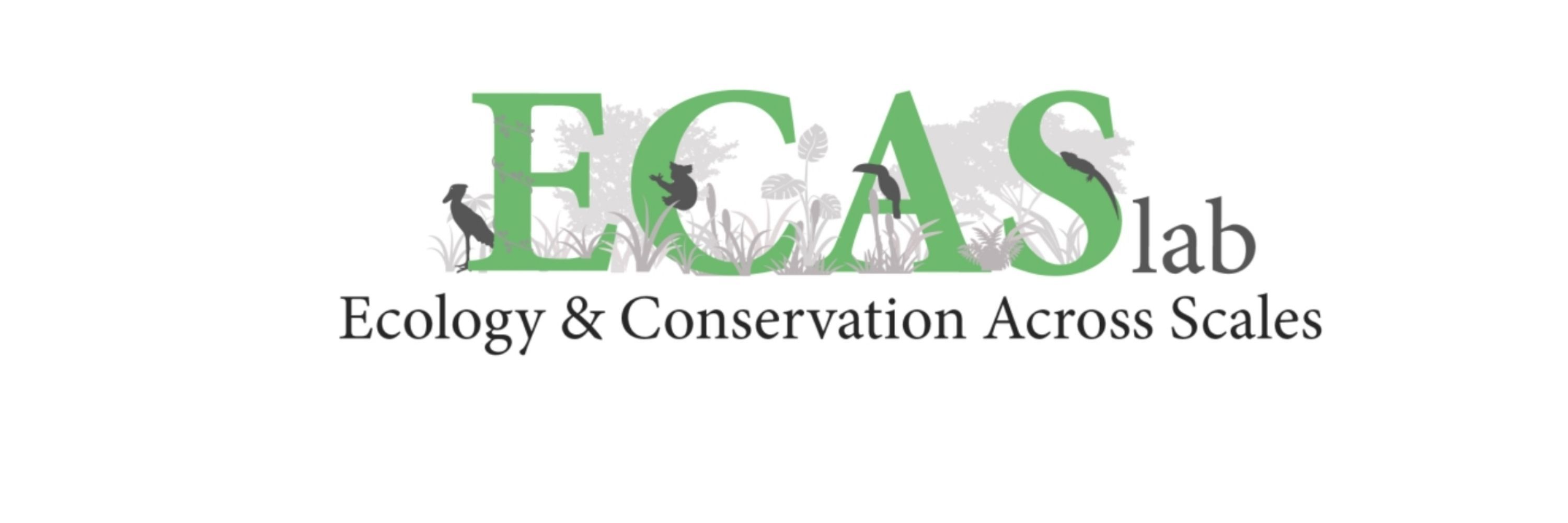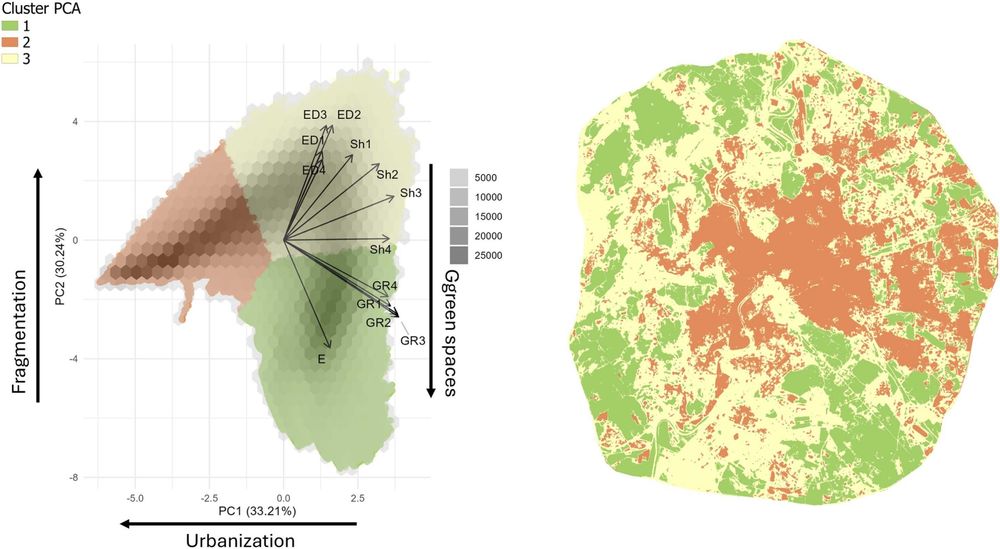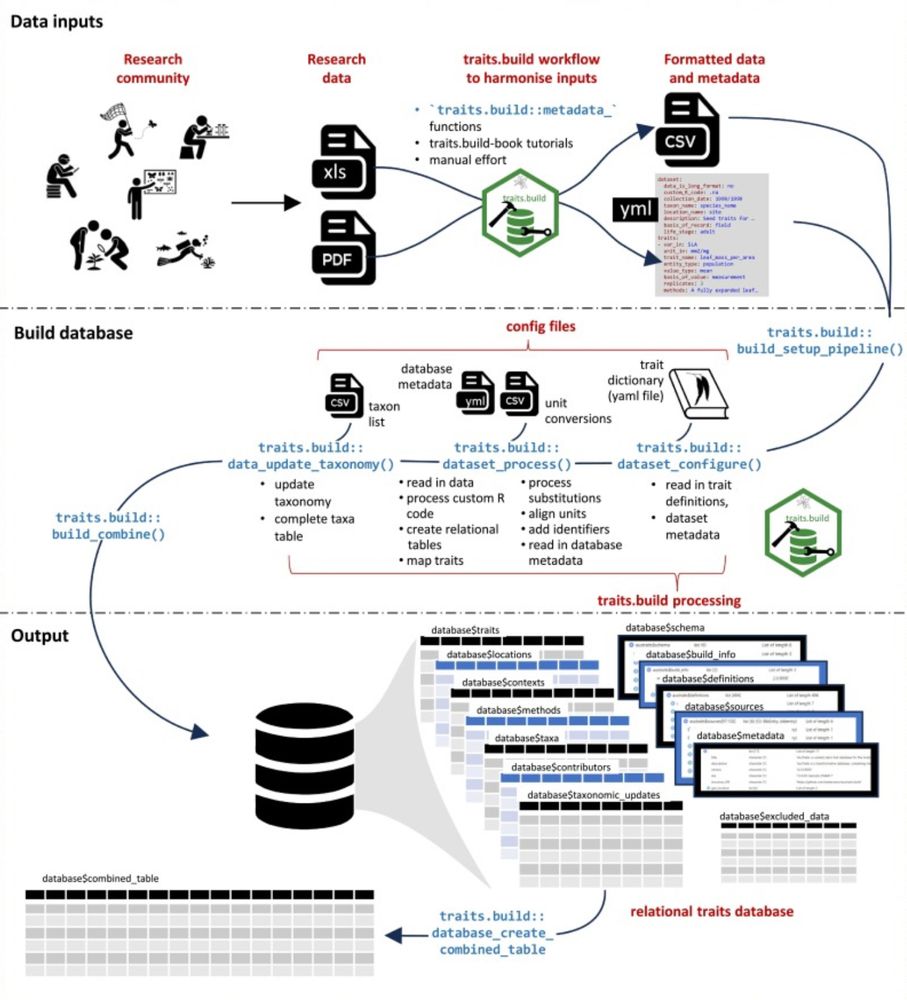
https://www.researchgate.net/profile/Davide-Mirante
How? BirdCast analyzes data from weather radars to separate bird migration from other activity: non-biological (rain, hurricanes, etc.) and other biological (bats, insects).

How? BirdCast analyzes data from weather radars to separate bird migration from other activity: non-biological (rain, hurricanes, etc.) and other biological (bats, insects).
Here we characterize the urban landscape and propose a multiscale framework to better support urban biodiversity research and planning
doi.org/10.1016/j.la...

Here we characterize the urban landscape and propose a multiscale framework to better support urban biodiversity research and planning
doi.org/10.1016/j.la...
Our meta-analysis explores how taxa, species traits, and disturbance type shape terrestrial vertebrates' glucocorticoid responses to human disturbance.
Check it out!
doi.org/10.1111/1365...

Our meta-analysis explores how taxa, species traits, and disturbance type shape terrestrial vertebrates' glucocorticoid responses to human disturbance.
Check it out!
doi.org/10.1111/1365...
Real nice paper estimating density of rainforest animals w camera traps & comparing w secr & line transects. Great job thinking through all the details of these models. Community density estimates possible w cams but need >25 detections for decent precision link.springer.com/article/10.1...

Real nice paper estimating density of rainforest animals w camera traps & comparing w secr & line transects. Great job thinking through all the details of these models. Community density estimates possible w cams but need >25 detections for decent precision link.springer.com/article/10.1...
check it out at doi.org/10.1111/geb....

check it out at doi.org/10.1111/geb....
besjournals.onlinelibrary.wiley.com/doi/full/10....

besjournals.onlinelibrary.wiley.com/doi/full/10....
We’re excited to invite conservationists, scientists, and practitioners from around the world to share their research and insights in Meanjin/Brisbane, Australia in June.
Learn more: conbio.org/mini-sites/i...
#conservation #MarineLife 🌍

We’re excited to invite conservationists, scientists, and practitioners from around the world to share their research and insights in Meanjin/Brisbane, Australia in June.
Learn more: conbio.org/mini-sites/i...
#conservation #MarineLife 🌍
Our study in @methodsinecoevol.bsky.social shows how #machinelearning can enhance wildlife surveys by automating species detection & classification and enabling unbiased density estimates 📷🦌.
Check it out! ⬇️
besjournals.onlinelibrary.wiley.com/doi/10.1111/...
Our study in @methodsinecoevol.bsky.social shows how #machinelearning can enhance wildlife surveys by automating species detection & classification and enabling unbiased density estimates 📷🦌.
Check it out! ⬇️
besjournals.onlinelibrary.wiley.com/doi/10.1111/...
by Elizabeth Wenk et al. in Ecological Informatics Nov. 2024
www.sciencedirect.com/science/arti...
🧪🌐🌍

by Elizabeth Wenk et al. in Ecological Informatics Nov. 2024
www.sciencedirect.com/science/arti...
🧪🌐🌍
Indeed a great collaboration, and I'm genuinely grateful for the unwavering support of @anabenlop.bsky.social, @lsantinieco.bsky.social, and David Costantini throughout every step of this study. Updates on the paper soon!
Indeed a great collaboration, and I'm genuinely grateful for the unwavering support of @anabenlop.bsky.social, @lsantinieco.bsky.social, and David Costantini throughout every step of this study. Updates on the paper soon!
Thrilled to announce my first paper, published online in GECCO! We explore how wildlife adjusts its spatio-temporal niche in the short term, to cope with human presence.
Read it here! 👉https://doi.org/10.1016/j.gecco.2024.e03053
Thrilled to announce my first paper, published online in GECCO! We explore how wildlife adjusts its spatio-temporal niche in the short term, to cope with human presence.
Read it here! 👉https://doi.org/10.1016/j.gecco.2024.e03053
If you would like to be added DM me or comment! 🔊
Let's grow it to increase connections 🌐
go.bsky.app/KXiSj3j
#ConservationBiology
#EarlyCareerResearchers
#Conservationists
If you would like to be added DM me or comment! 🔊
Let's grow it to increase connections 🌐
go.bsky.app/KXiSj3j
#ConservationBiology
#EarlyCareerResearchers
#Conservationists

